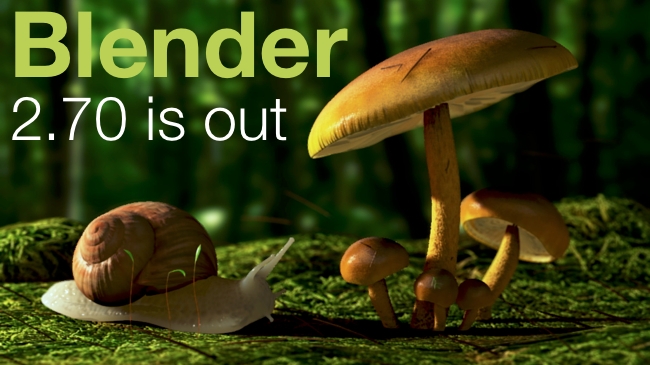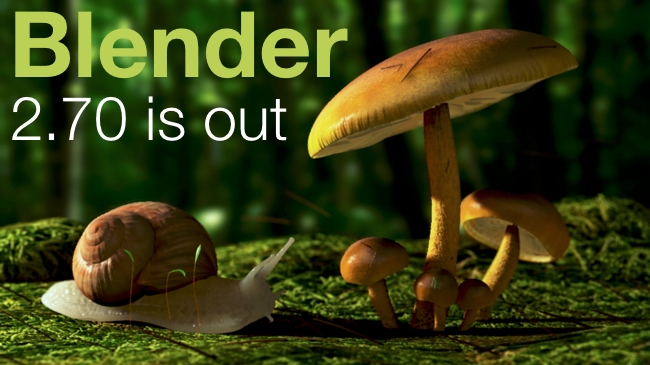
 Blender 2.70
Blender 2.70
The Blender Foundation has released Blender 2.70 – the first release of the 2.7x-series. That series will incorporate major changes to the UI. But unlike the switch from the 2.4x to the 2.5x-series, the changes will be integrated gradually
By Gottfried Hofmann
While the design of input-buttons has changed and many options are more packed together, the main difference you will notice are the tabs for the toolbars. Tools are that are used together in common tasks are now grouped together in tabs, which de-clutters the space on screen and is a first step towards a task-oriented interface.
The input for the transform tools now can take units (like degrees or radians) and simple mathematical formulas in Python-syntax. For grouped input buttons, mouse gestures allow to change multiple values at once.
Under the hood, the scene-update system has become multithreaded, which results in faster animation playback in the viewport. The performance of the Cycles render engine has also been increased. For CPU-based rendering, image textures and some procedurals now render up to 30% faster. OSL-Shaders are computed 10 to 30% faster.
The render-engine Cycles now has support for volumes as a main new feature. It supports homogenous and heterogenous volumes, but for the latter only procedural and image textures can be used. Rendering of voxel data which is a requirement for smoke and fire has been postponed to versions 2.71. Volume rendering also also supported on CPU only, with GPU rendering being postponed as well.
Motion tracker
The motion tracker has been given support for weighted tracks. Those can help reduce sudden jumping on the camera solution if a features leaves the screen. Together with the improved auto-detection of features it can also be used to create point clouds from real world geometry. Plane tracks can now be previewed from inside the motion tracking window.
The game engine got support for level of detail (LoD), a new walk mode and Photoshop / PSD-files can now be imported. They need to be saved with maximum compatibility and will be flattened down to a single layer, though.
On the modelling side, the tesselation of N-Gons to triangles has been improved and should neither result in holes in the mesh, nor yield different results depended on transformations. The bevel tool got more options that are also available in the modifier version, like setting the profile to be either convex or concave. The boolean modifier has been improved and does no longer tesselate N-Gons and preserves mesh data like for example seams.
New modifiers
Two new modifiers have been introduced. The wireframe modifier is based on the wireframe tool and generates a 3D grid based off the edges of a model. It supports vertex weights and different materials for grid and the original model. The Laplacian deform modifier is meant for quick and simple posing of objects. It works like the hook modifier but with minimal stretching for the object's faces.
The new addons in Blender 2.70 include an exporter to the Sketch Fab format and the “Node Wrangler”. Formely known as “Node efficiency tools” it adds a long list of usability features to the node editor in Blender like copying settings between nodes, easy node swapping and changing plus many more to support the workflow of compositors and shading artists.
This article only gives an overview of the larger new features. In addition, a myriad of small features and improvements has been added and more than 570 bugs have been fixed that existed in previous versions. Blender 2.70 is available for Windows, Mac and Linux in both 32 and 64 bit.
Tags: Technology


Comments